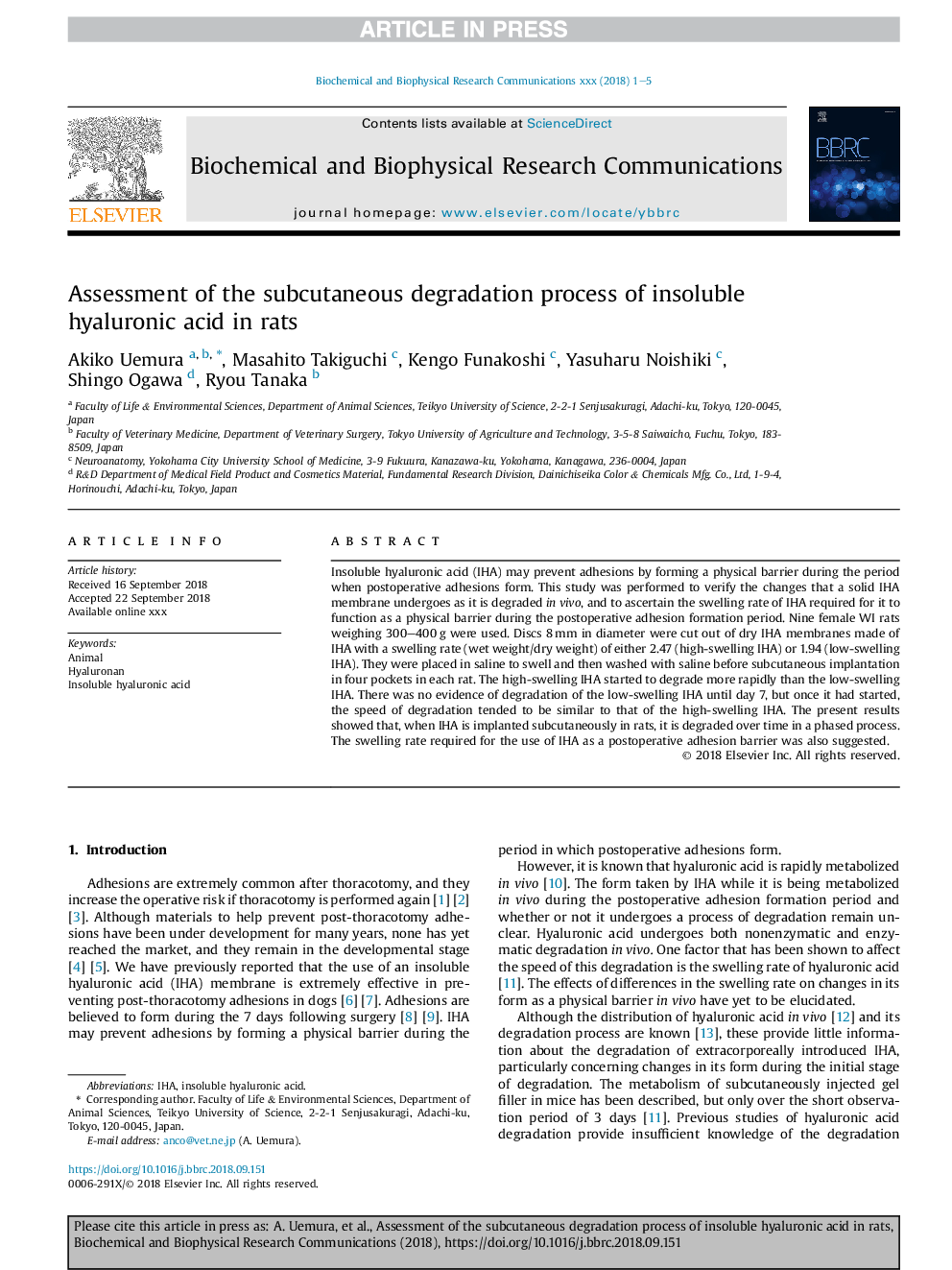| Article ID | Journal | Published Year | Pages | File Type |
|---|---|---|---|---|
| 11987990 | Biochemical and Biophysical Research Communications | 2018 | 5 Pages |
Abstract
Insoluble hyaluronic acid (IHA) may prevent adhesions by forming a physical barrier during the period when postoperative adhesions form. This study was performed to verify the changes that a solid IHA membrane undergoes as it is degraded in vivo, and to ascertain the swelling rate of IHA required for it to function as a physical barrier during the postoperative adhesion formation period. Nine female WI rats weighing 300-400â¯g were used. Discs 8â¯mm in diameter were cut out of dry IHA membranes made of IHA with a swelling rate (wet weight/dry weight) of either 2.47 (high-swelling IHA) or 1.94 (low-swelling IHA). They were placed in saline to swell and then washed with saline before subcutaneous implantation in four pockets in each rat. The high-swelling IHA started to degrade more rapidly than the low-swelling IHA. There was no evidence of degradation of the low-swelling IHA until day 7, but once it had started, the speed of degradation tended to be similar to that of the high-swelling IHA. The present results showed that, when IHA is implanted subcutaneously in rats, it is degraded over time in a phased process. The swelling rate required for the use of IHA as a postoperative adhesion barrier was also suggested.
Keywords
Related Topics
Life Sciences
Biochemistry, Genetics and Molecular Biology
Biochemistry
Authors
Akiko Uemura, Masahito Takiguchi, Kengo Funakoshi, Yasuharu Noishiki, Shingo Ogawa, Ryou Tanaka,
